Innovations for Educational Facility Design
Sustainable, Maintainable Grounds
With more use of indoor-outdoor educational models, architects are also focusing on how to maximize the enterprise life cycle of investments in building sites, landscaping and outside areas such as plazas, terraces, rooftops, and open-air atriums and walkways. The Sustainable Sites (SS) sections in both CHPS and LEED for Schools take aim at increasing open area in general as well as heat-island effects, stormwater control, and restoring native vegetation as natural habitat.
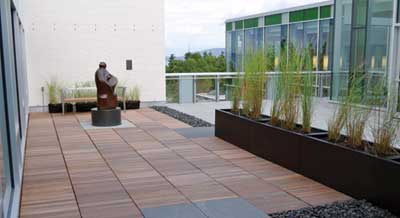 |
The University of British Columbia Law School, which is LEED Gold certified, includes a landscaped rooftop deck with underfoot tiles made of certified wood – FSC-C013454, to be precise – which can contribute to LEED points. Photo courtesy of Bison Innovative Products |
As one result, "Applications of vegetated green roofs have gained popularity on college campuses and K-12 facilities," notes Mark Fusco, LEED AP, a green-roof consultant with Bison Innovative Products, a Denver-based manufacturer of wood tiles and pedestal-supported rooftop decking. "Administrators at educational institutions are beginning to understand the human and environmental benefits of adding green roofs to buildings." Fusco points to two LEED Gold projects, including Centennial College near Toronto – which features a green roof and an indoor green wall – as well as the University of British Columbia Law School, with a landscaped rooftop deck that uses wood tiles certified by the Forest Stewardship Council, or FSC.
Green certifications reward these rooftop gardens, raised plantings atop former concrete or asphalt surfaces, and other means for adding habitat. SS credits in LEED for Schools may be earned with facility designs that incorporate high-albedo roof surfaces as well as vegetated roof planes. Albedo can be measured by solar reflectance index (SRI), and LEED for Schools generally requires an SRI of greater than or equal to 29 for paving materials, non-roof surfaces and at least 75% of steep-sloped roof area. For low-slope roofs (less than or equal to 2:12), the SRI requirement jumps to 78 or more. Two calculation methods allow for a combination of high-SRI materials and vegetated areas on rooftops to reduce heat-island effect (LEED for Schools' SS Credit 7.2; see diagram below).

Just as important as specifying the right rooftop materials is integrating the results into the curriculum, says Bernardo Fort-Brescia, FAIA, founding principal of Arquitectonica, headquartered in Miami. "Historically there has been an emphasis on durability, particularly in high schools, but there is a new awareness of materials and systems that teach about sustainability," he explains. Rooftop gardens, such as the one atop the firm's School of International and Public Affairs at Florida International University, allow students and faculty appreciation of Florida's unique climate and plant species.
At the Metro Career Academy in Oklahoma City, says Lander, glass panels allow students to view the geothermal system's inner workings. Other examples include The Willow School in Gladstone, N.J., a new stone-walled independent elementary school that incorporates sustainable-living principles into its curriculum. Each classroom has large windows and a dedicated door so students can readily appreciate "elements of responsible living" such as local flora and an integral rainwater catchment system.
Notice
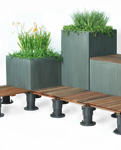
www.BisonIP.com
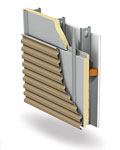
www.buildbetterwalls.com

www.price-hvac.com/sustainable
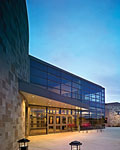
www.sunguardglass.com
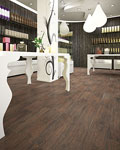
www.floridatile.com
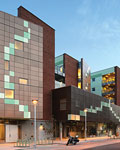
www.dri-design.com
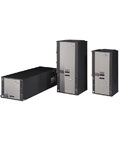
www.climatemaster.com
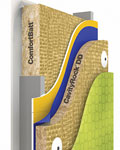
www.roxul.com
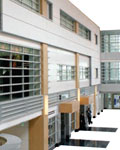
www.safti.com
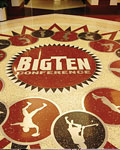
www.ntma.com
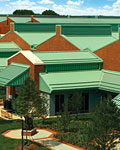
www.PAC-CLAD.com
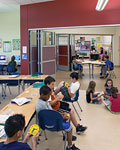
www.Nanawall.com









